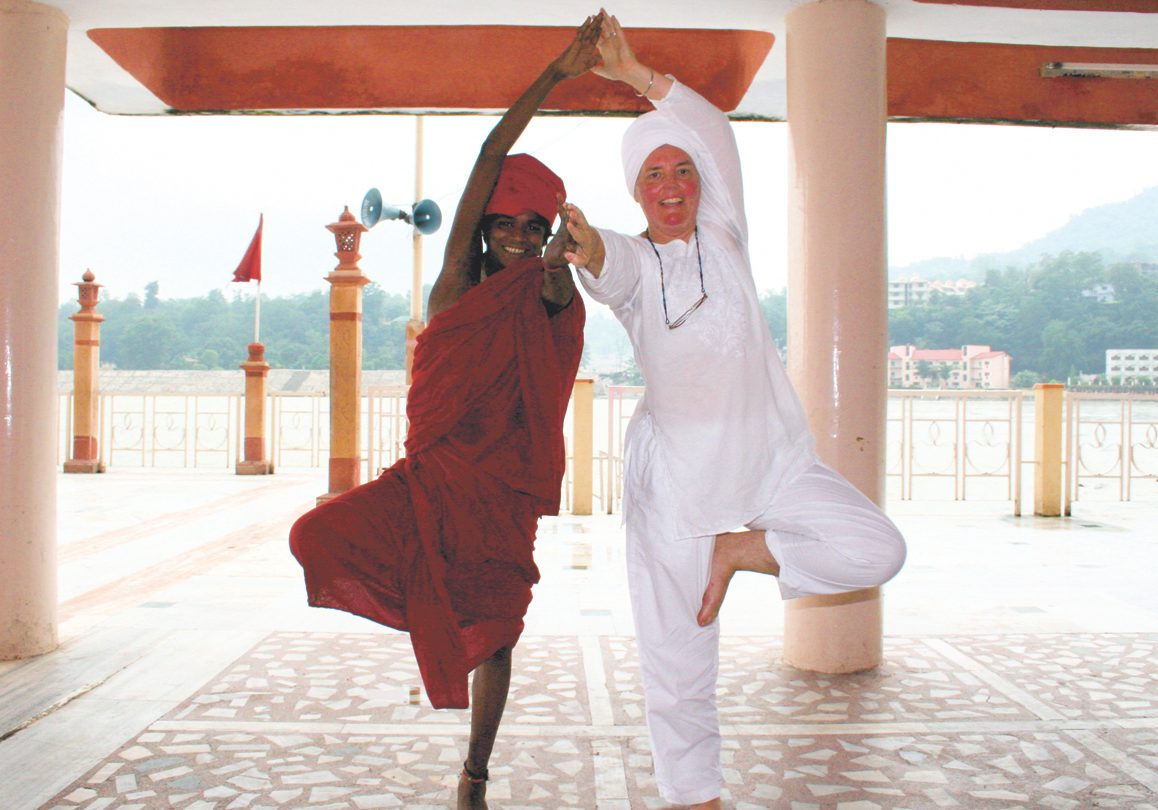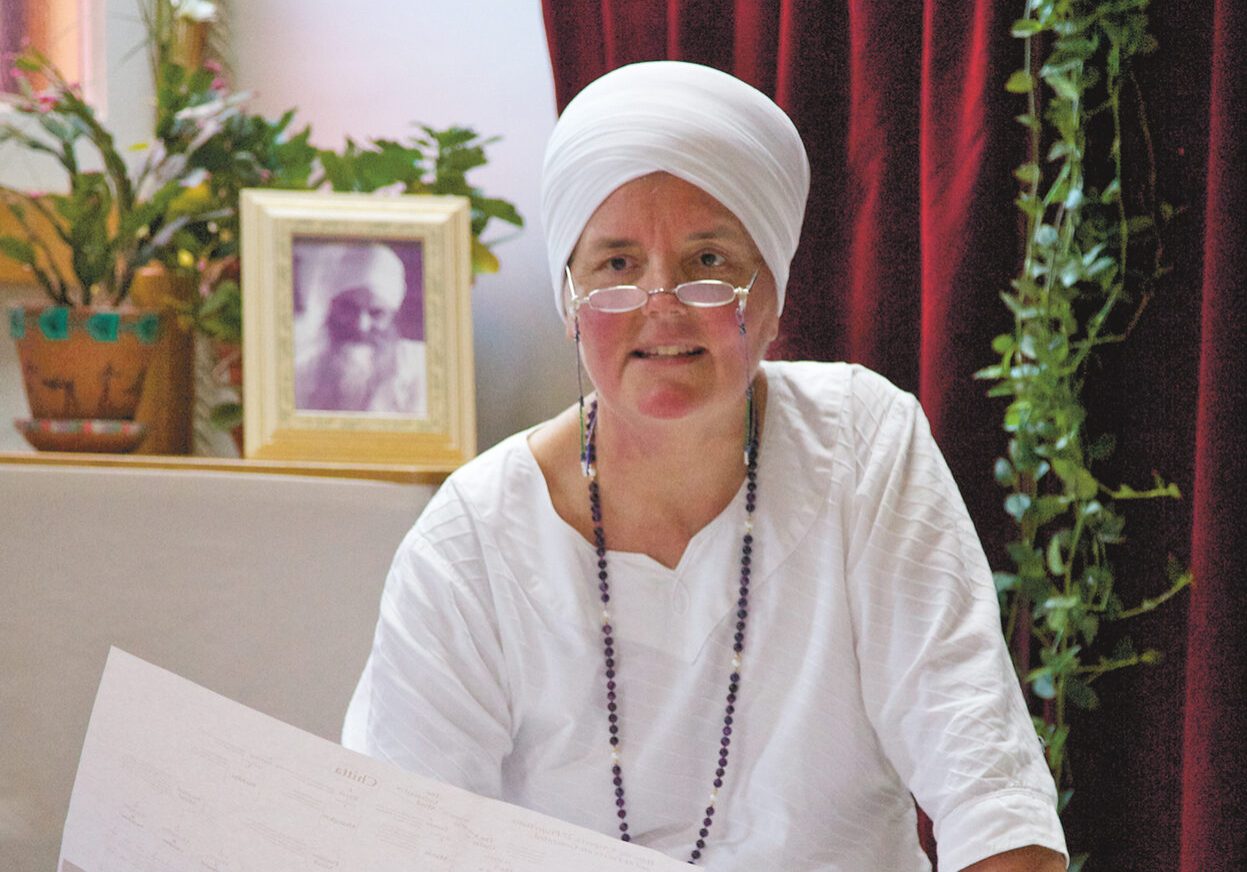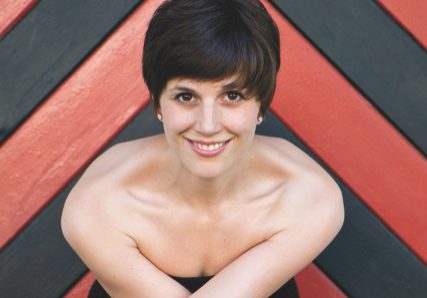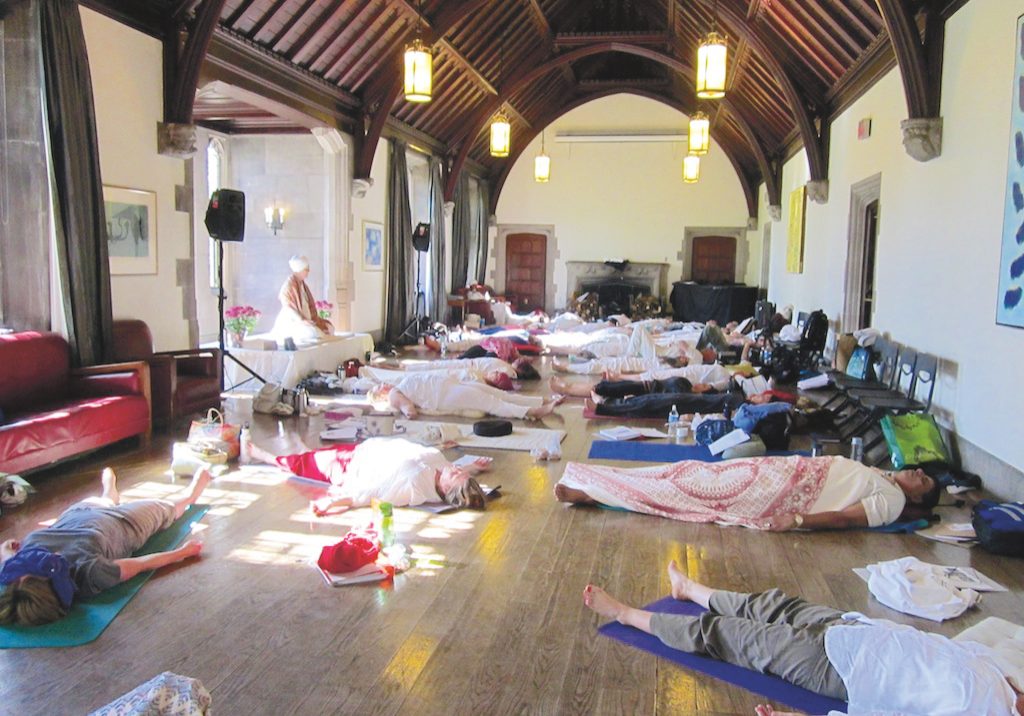
Yoga for addiction
Can yoga help recovering addicts? OM meets Sat Dharam Kaur of Beyond Addiction. By David Holzer
I ’m one of many people who yoga has helped to live a sober life. Although I have some idea why, I was keen to find out more, so I reached out to Sat Dharam Kaur of Beyond Addiction.
Sat Dharam Kaur is a Kundalini Yoga teacher and naturopathic doctor. She co-created the Beyond Addiction programme in 2008 with Jivan Joti Kaur. Beyond Addiction is designed for people wanting to develop healthy habits and overcome addictive behaviour as well as certified Kundalini Yoga teachers who’d like to teach a yoga-based addiction recovery programme. Courses are taught internationally.
Alongside the teachings of Yogi Bhajan, who brought Kundalini Yoga to the West, the programme integrates the work of experts in addiction. Chief among these is Dr. Gabor Maté, who has written a number of books. His award-winning In the Realm of Hungry Ghosts: Close Encounters with Addiction is well worth reading.
I spoke to Sat Dharam Kaur online. She comes across as a powerful, composed woman with a good laugh.
How did you discover Kundalini Yoga?
It was 1976. I was 19 and hitch-hiking in Nova Scotia, Canada and met someone who told me about Kundalini. A few months later, back in Toronto, he invited me to practice Kirtan Kriya, a specific meditation, with him. This was my first experience of yoga and any kind of meditation. We did Kirtan Kriya for over two hours and I had a powerful experience that changed me forever. I recognised that what I thought was reality wasn’t real. Everything opened up and I had an experience of light that was filled with three things: unconditional love, divine wisdom and non-attachment. I made a vow to serve this experience for the rest of my life because everything paled next to it.
Why do you think Kundalini Yoga is getting so popular?
People are still looking for a spiritual experience and it’s becoming more widely recognised that Kundalini is the form of yoga that gives you this. I have people coming to my teacher trainings after they’ve done programmes in different kinds of yoga and they tell me it’s because they still haven’t found what they’re looking for. They find it in Kundalini. That’s one reason.
The other reason is that we’re just more visible now because of the music of people like Snatam Kaur. Some of our teachers have a bigger profile in social media. We’re getting more savvy at promoting ourselves. Wearing white and the turban and standing out used to be fringe and now it’s becoming kinda cool, I think. There’s just more acceptance internationally of variety, multiculturalism and spirituality.
I’ve found that my experience as a recovering alcoholic, of discovering Kundalini and falling in love with it is not at all uncommon.
That’s what everyone says. We hear the words ‘I feel like I’ve come home to myself’ over and over. Kundalini brings us back to our spirit, reconnects us. Our bodies are reintegrated, and we become part of a community. Also, Kundalini is never boring. You can do it forever and there’s always something new to learn.


What are your thoughts on neuroscience, addiction and the effects of Kundalini?
The first thing to understand is that all addiction is rooted in trauma. Something happened in a child’s life that either shouldn’t have happened or something should have happened and didn’t. The child needed someone to console them, sit with them and be with their pain and that person wasn’t available to them. This led the child to disconnect from their feelings, the present moment, their body and needs, which resulted in the suppression of pain. Suppressing feeling and being disconnected then becomes attached to some sort of story. As Gabor Maté says, don’t ask ‘Why the addiction?’, ask ‘Why the pain?’. Addiction is a coping strategy to seek relief from emotional pain, much of which is unconscious.
Trauma decreases the function of the frontal lobe of the brain. Addicts often have diminished activity in the prefrontal cortex, which is involved with choice, aligning for the future, decision-making, ethical behaviour and so on. If the function of the prefrontal cortex is reduced, we act instinctively or impulsively. An addict will give in to temptation. We need to turn on the frontal lobe and yoga helps do that.
How does it do that?
When you gaze at the tip of your nose it activates the frontal lobe. Chanting a mantra repeatedly does the same thing. In Kundalini, we have yoga sets and kriyas specifically for the frontal lobe.
The other thing is that if we bring people into the present moment, into their body, through mantra and through paying attention, we take them out of the story-making that governs addiction. Someone might be telling themselves ‘I need a drink, or I’m a piece of sh*t, or whatever’ and we replace that with ‘Sat Nam’. ‘Sat’ means truth or being. ‘Nam’ means name or identity. Together they mean ‘I am truth’ or ‘Truth is my essence’. We say ‘Sat’ on the in breath and ‘Nam’ on the out breath. It reminds us of who we are.
In Kundalini Yoga, the teaching is that any mantra has an energy to it. Repeating ‘Sat Nam’ energetically, for instance, aligns us with our true self and the cosmos. It’s saying, ‘I’m not my personality, not my past, not what others want me to be’. This helps us develop inner wisdom and frees us from internal judgement. We’re no longer driven by compulsions, addictions, complexes and unconscious beliefs.
On a practical level, using the breath and a mantra increases the intake of oxygen and takes you into a pleasant state. Do this in a group and there’s also a feeling of connection and safety, which addicts desperately need.
What kind of success rates do you have, in terms of people quitting substance abuse completely after being exposed to the programme or recognising they’ve come to a deeper understanding of themselves that’s leading them towards sobriety?
We’ve done a little bit of research and everyone says, ‘I feel better than when I started, this is amazing’. Probably around 80% would have stopped or decreased whatever it was they came into the programme to deal with. 100% would say my life is better, I’m calmer, I have more energy, I get along better with the people around me. But we don’t promise this is going to happen. We say this is a journey into yourself, to learn some healthy patterns to help you not need other behaviours. We’re not forcing people to do anything. We’re asking them to understand what drives them, to see how they’re using their addiction as a coping mechanism and we encourage them to express how they’re feeling. We do this in a safe space with what can feel like a replacement family.
In our course, we mirror people’s potential, not the bad stuff. We do this by focusing on what we call someone’s ‘best future self’ – the person they want to become. This gives addicts a goal, which is essential for recovery. It offers a possibility they can give energy to that connects to their spirit and what they really want. Having a goal can override the brain motivational circuit that’s hooked into the substance. Visualising their best future self and being reminded of it by other people gradually unwires the neurons that were firing up the addiction.
We’re really talking about changing lives for people over the long haul. And Beyond Addiction is becoming a global community of people who are in it for the right reasons. They’ve been transformed, they’re passionate about the programme, they want to help others and share what they’ve learned. It’s connecting people so together we can help humanity. That’s profoundly beautiful.
Find out more about the great work Beyond Addiction is doing at: beyondaddiction.ca
“We say this is a journey into yourself, to learn some healthy patterns to help you not need other behaviours. We’re not forcing people to do anything.


YOGA AND ADDICTION
One thing it’s important to stress is that it’s not just Kundalini Yoga that can help addicts recover.
Elisa Malinverni is a yoga teacher and writer currently writing a book on yoga and addiction (full disclosure: I’m mentoring her). I asked Elisa what she thought were the benefits of doing any form of yoga for recovering addicts.
WHY DO YOU THINK MORE PEOPLE ARE BECOMING INTERESTED IN THE BENEFITS OF YOGA FOR RECOVERING ADDICTS?
Yoga is penetrating and permeating everything. It’s an easy way to learn to relax without having to pay to see a bodyworker or therapist. But it’s also become a valuable tool for physical and psychotherapists who appreciate that yoga breath techniques and asana can release trapped emotions, memories and trauma.
WHAT ASPECTS OF YOGA IN GENERAL ARE MOST VALUABLE FOR RECOVERING ADDICTS?
The most important one is that every yoga asana or breathing practice is a mild stressor. When we practice in the controlled environment of the studio, we’re building the capacity to deal with low-level stress and observe sensation in the body as well as emotions that might arise without reacting impulsively. Bringing this capability into our daily lives can help prevent us from reaching for whatever we feel we need to recreate our inner balance – booze or drugs, in the case of the addict.
WHAT ARE THE POTENTIAL PITFALLS OF TAKING UP YOGA FOR RECOVERING ADDICTS?
Certain yoga styles are sometimes presented in a way that emphasises the ability to master poses, move on to the next and go deeper. This recreates the cycle that helped form the addict in the first place: craving, getting temporary relief and chasing the next high. When we practice yoga in this way, we never learn to be in a mild stressor and create a calm inner environment. Also, vigorous styles usually involve some kind of strain, from stretching or muscular effort, which makes the body release endorphins, our natural painkillers. We must always remember yoga is about balance.




